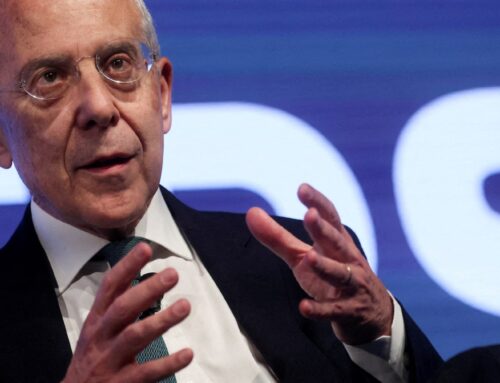Kinnevik AB (KNEVF) Q3 2025 Earnings Call Highlights: Strategic Investments and Robust Gro
November 4, 2025
This article first appeared on GuruFocus.
-
Net Asset Value (NAV): Up 2% to SEK37.5 billion or SEK136 per share at the end of Q3 2025.
-
Net Cash Position: SEK8.6 billion after investing SEK1 billion mainly in existing companies.
-
Revenue Growth (Core Companies): 35% average growth in the first nine months of 2025.
-
EBITDA Margin Improvement: Improved by 2 percentage points year-on-year for core companies.
-
TravelPerk Gross Margin: Exceeds 70%, up from 40% at the end of 2022.
-
TravelPerk Revenue Growth: 50% year-to-date.
-
Mews Run-Rate Revenue: Passed EUR330 million in August 2025.
-
Enveda Valuation Increase: 55% above book value from Q2 in USD terms.
-
Private Portfolio Fair Value Increase: Up 3% in SEK and 4% in constant currencies.
-
Investment Activity: SEK1 billion invested in Q3, with SEK169 million in Mews and participation in Enveda’s and Aira’s funding rounds.
-
Currency Impact: Negative impact of SEK0.4 billion on NAV in Q3; SEK3.4 billion year-to-date.
-
Core Companies Expected Growth: 30% to 40% average growth with an EBITDA margin between breakeven and negative 5%.
Release Date: October 16, 2025
For the complete transcript of the earnings call, please refer to the full earnings call transcript.
-
Kinnevik AB (KNEVF) reported a 2% increase in net asset value, reaching SEK37.5 billion at the end of Q3 2025.
-
The company maintains a strong net cash position of SEK8.6 billion, allowing for strategic investments.
-
Core companies like Spring Health, TravelPerk, and Mews demonstrated strong growth and improved profitability, with an average revenue growth of 35% and a 2-percentage-point improvement in EBITDA margins.
-
AI integration across the portfolio has driven automation and efficiency, enhancing customer value and operational performance.
-
Kinnevik AB (KNEVF) successfully participated in funding rounds for Enveda and Aira, with Enveda’s valuation increasing by 55% above the previous book value.
-
Currency fluctuations negatively impacted the net asset value by SEK0.4 billion in Q3, with a year-to-date negative impact of SEK3.4 billion.
-
Multiple contraction in the private portfolio was negative 3%, aligning with public market trends.
-
Cityblock faced gross margin pressure due to industry-wide cost increases, impacting profitability.
-
Spring Health’s growth expectations were revised down slightly due to slower-than-expected growth, despite securing large contracts.
-
TravelPerk’s margins were intentionally pressured due to investments in AI-driven innovation, affecting short-term profitability.
Q: How does TravelPerk differentiate itself from competitors like Navan? A: Georgi Ganev, CEO: TravelPerk is particularly strong in the SMB market, focusing on unmanaged travel spaces. This positioning is considered better than Navan’s. TravelPerk has demonstrated profitability at EUR200 million in ARR, indicating faster scalability.
Q: What factors contributed to the margin improvements year over year, and why was the 2% figure lower than in Q2? A: Samuel Sjostrom, CFO: The margin changes are primarily due to TravelPerk’s investment of funds raised earlier this year, which has impacted margins. Additionally, Spring’s growth has slightly decreased, but large contracts signed this year are expected to convert into revenue next year.
Q: What is the near-term pipeline for investments and capital allocation in Q4? A: Georgi Ganev, CEO: The focus is on core companies that have reached scale and proven their business models. While there is no immediate need to add new businesses, opportunities to invest more in existing companies like Mews will be considered. The approach will be highly selective, focusing on accelerating portfolio maturity.
Q: Why did Spring Health’s multiple decrease by 7% despite improved future growth prospects? A: Samuel Sjostrom, CFO: While Hinge is a relevant comparison, Spring’s valuation is triangulated against a broader peer set. The multiple decrease reflects a nuanced assessment of health care technology and SaaS businesses, considering structural differences in gross margins.
Q: What are the expectations for exit opportunities and capital allocation in 2026 and 2027? A: Samuel Sjostrom, CFO: The company is confident in generating monetization and liquidity opportunities over the next 12 to 24 months, with Spring and TravelPerk being potential IPO candidates. The capital allocation will focus on opportunities that accelerate portfolio stability and maturity.
Q: What are the differences between Betterment and Wealthfront, and how do they impact Betterment’s valuation? A: Samuel Sjostrom, CFO: Wealthfront has a higher share of cash products and float revenue, while Betterment focuses more on investment advisory products. Betterment’s B2B capabilities differentiate it, and Wealthfront’s margins indicate potential profitability for Betterment as it scales.
Q: What lead indicators suggest strong performance for core companies in 2026? A: Samuel Sjostrom, CFO: Key indicators include Mews’ strong sales and improved onboarding, Spring’s large contracts set to convert to revenue in 2026, and Cityblock’s robust contract pipeline. These factors provide visibility on top-line growth, although margin dynamics remain more variable.
Q: What is the status of Stegra’s financing round, and what factors will influence Kinnevik’s participation? A: Georgi Ganev, CEO: The funding round is around SEK10 billion, involving equity, debt, and partnerships. Kinnevik has not yet committed to this round and will assess its participation based on the final structure and its existing exposure to similar investments.
For the complete transcript of the earnings call, please refer to the full earnings call transcript.
Terms and Privacy Policy
Search
RECENT PRESS RELEASES
Related Post




